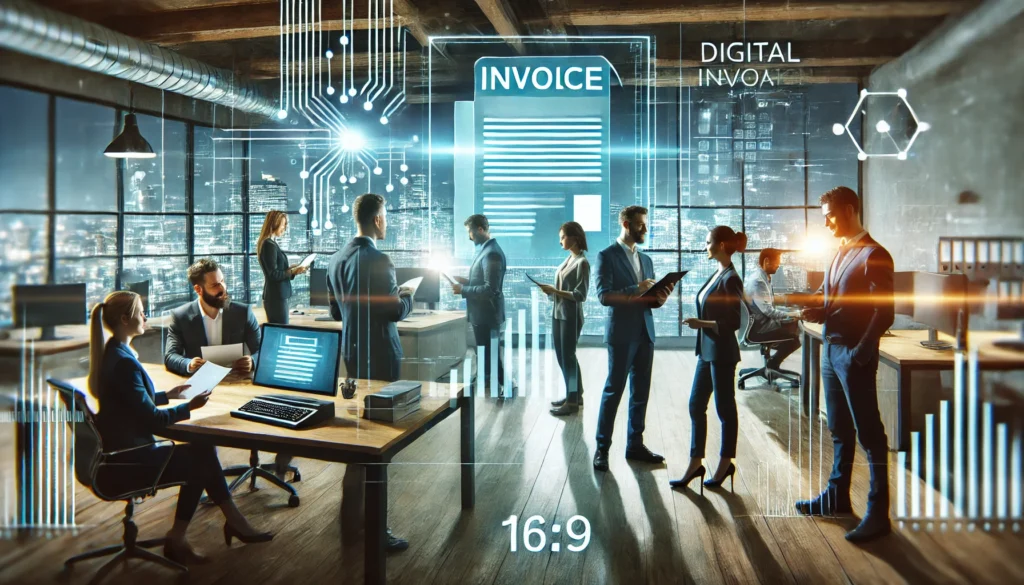
Interim CIO: Dr. Claus Michael Sattler
Challenges and opportunities: Implementing eInvoicing - How we did it in our company!

As the managing director of a medium-sized company, I am faced with an important task: implementing e-invoicing in our company. This transition is not only a legal requirement, but also an opportunity to modernize and increase efficiency. In this article, I would like to share our journey to successfully implementing eInvoicing, highlighting both the challenges and the opportunities.
The countdown is on: Why we need to act now
Since January 1, 2025, all companies in Germany must be able to receive electronic invoices [source: 6]. This deadline may still seem a long way off, but experience shows that time passes quickly, especially when far-reaching changes are made to company processes. Careful planning and gradual implementation are essential for the successful implementation of e-invoicing.
Our strategy for eInvoice implementation
1. inventory and analysis
The first step in our eInvoice implementation is to take a close look at our current invoicing processes. We analyze how many invoices we process each month, which systems we currently use and where the greatest inefficiencies lie. This inventory helps us to precisely define the requirements for our future e-invoicing system.
2. selection of the appropriate e-invoicing solution
When choosing the right software for eInvoice implementation, we take several factors into account:
- Compatibility with our existing systems
- Compliance with legal requirements, in particular EU standard EN16931 [source: 5]
- Scalability for future company growth
- User-friendliness for our employees
We opt for a solution that supports both the XRechnung and ZUGFeRD formats to ensure maximum flexibility [source: 2].
3. technical integration and system customization
The technical integration of the e-invoicing solution into our existing IT infrastructure is one of the biggest challenges. We work closely with our IT department and external experts to ensure that the new software communicates seamlessly with our ERP system. We pay particular attention to ensuring that the data transfer functions securely and reliably [source: 5].
4. process optimization and automation
The eInvoice implementation offers us the opportunity to rethink and optimize our entire invoicing processes. We identify areas where we can save time and resources through automation. For example, we set up automated workflows for invoice verification and approval, which significantly reduces manual effort [source: 1].
5. training and change management
An often underestimated but crucial aspect of e-invoicing implementation is the involvement and training of our employees. We develop a comprehensive training program that not only covers the technical aspects of the new software, but also communicates the advantages and long-term benefits of the changeover. Through regular updates and open communication, we ensure that everyone involved understands and supports the process [source: 5].
6. test phase and gradual introduction
Before we implement eInvoicing across the board, we carry out an extensive test phase. We start with a pilot project in one department and then gradually extend it to the entire company. This approach enables us to identify problems at an early stage and rectify them before they affect the entire company.
7. communication with business partners
Successful eInvoice implementation also requires close coordination with our business partners. We inform our customers and suppliers about the changeover at an early stage and offer support in adapting their systems. This proactive communication helps to minimize potential friction points and ensure a smooth transition [source: 1].
Challenges with eInvoice implementation
Technical hurdles
One of the biggest challenges when implementing eInvoicing is the technical integration into existing systems. Many companies, especially SMEs, have established IT structures that are not readily compatible with modern eInvoicing solutions. Adapting and expanding these systems can be time-consuming and cost-intensive [source: 5].
Legal complexity
Compliance with the legal requirements for eInvoices requires an in-depth understanding of current legislation. Data protection, archiving and verification requirements must be carefully considered. This can be particularly challenging for smaller companies without their own legal department [source: 6].
Employee acceptance
For many employees, the switch to eInvoices means a significant change to their usual work processes. Resistance to change and the need for extensive training can slow down the implementation process [source: 5].
Investment costs
The initial investment in software, hardware and training for e-invoicing implementation can be considerable. For many SMEs, this represents a financial challenge, especially if the immediate benefits are not immediately apparent [source: 1].
Opportunities and benefits of eInvoice implementation
Increased efficiency and cost savings
The automation of the invoicing process through the eInvoice implementation leads to considerable increases in efficiency. Manual data entry is minimized, which not only saves time but also reduces sources of error. In the long term, companies can realize significant cost savings by switching to eInvoices, especially in terms of paper, printing and shipping costs [source: 2].
Improved liquidity and payment processing
Faster processing of e-invoices can speed up payment processes. This leads to improved liquidity management and can have a positive impact on working capital. In addition, eInvoice implementation provides a better overview of open items and facilitates the dunning process [source: 5].
Increased data security and compliance
Contrary to common misgivings, e-invoices often offer a higher level of security than conventional paper invoices. The use of digital signatures and encrypted transmission channels ensures the integrity and authenticity of invoice data. Digital archiving also makes it easier to comply with statutory retention periods [source: 2].
Environmental protection and sustainability
Reducing paper consumption through eInvoice implementation makes an important contribution to environmental protection. Companies can reduce their CO2 footprint and at the same time strengthen their image as an environmentally conscious company [source: 5].
Basis for further digitization steps
The successful implementation of eInvoicing lays the foundation for further digitalization initiatives within the company. It creates a basis for the integration of other digital processes and can serve as a catalyst for a comprehensive digital transformation [source: 3].
Conclusion: eInvoicing as a springboard into the digital future
The implementation of eInvoicing in our company is undoubtedly associated with challenges. However, the long-term benefits far outweigh them. Through careful planning, gradual implementation and continuous adaptation, we can take full advantage of the opportunities offered by digitization.
Implementing eInvoicing is more than just fulfilling a legal requirement – it is a strategic step towards securing the future of our company. It enables us to work more efficiently, reduce costs and strengthen our competitiveness. At the same time, we are positioning ourselves as an innovative, future-oriented company that is ready to take on the challenges of digital transformation.
By proactively implementing eInvoicing now, we are not only creating the conditions for a smooth transition by 2025, but also laying the foundation for further digitalization steps. eInvoicing is the start of an exciting journey into the digital future of our company – a journey that I and our entire team are looking forward to.
Sources
- https://www.arbeitsblog.de/themen/artikel/e-rechnung-2024-chancen-und-herausforderungen-fuer-personaldienstleister/
- https://ecovis-kso.com/blog/welche-chancen-bietet-die-verpflichtende-e-rechnung/
- https://nethinks.com/allgemein/die-e-rechnung-herausforderungen-chancen-fuer-unternehmen-ab-2025/
- https://www.ihk.de/darmstadt/produktmarken/recht-und-fair-play/steuerinfo/bmf-plant-verpflichtende-erechnung-und-meldesystem-5784882
- https://erechnung-einfach-sicher.de/herausforderungen-bei-der-umstellung-auf-e-rechnungen/
- https://www.dihk.de/de/aktuelles-und-presse/tdw/die-verpflichtende-e-rechnung-kommt-was-betriebe-jetzt-wissen-muessen-125494
- https://beschaffung-aktuell.industrie.de/einkaufscontrolling/die-e-rechnung-chancen-und-herausforderungen-fuer-die-beschaffung/
- https://www.ihk.de/dresden/hauptnavigation/recht-steuern/erechnung-6232764
- https://www.renneberg-gruppe.de/news/die-e-rechnung-kommt-welche-herausforderungen-und-chancen-die-e-rechnung-mitbringt/
- Image: ChatGPT